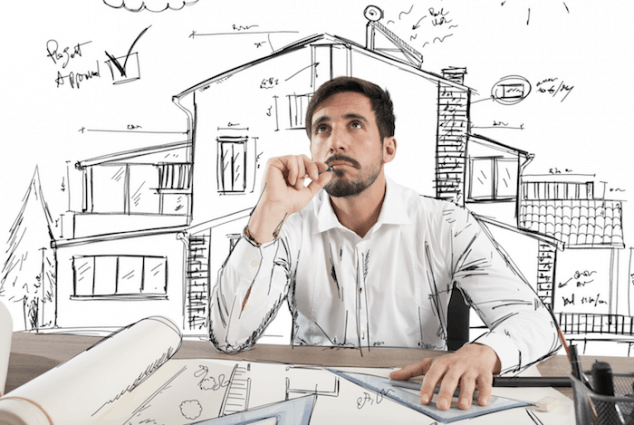The Duty of Sustainability and Modern Technology in Modern Architect Practices
Sustainability and modern technology are improving modern design in methods you could not expect. By accepting eco-friendly materials and wise technologies, engineers are not simply producing buildings; they're crafting settings that enhance our top quality of life.
The Relevance of Lasting Architecture
Lasting design is essential not just for the setting but likewise for improving our lifestyle. You're not simply reducing your carbon footprint; you're producing areas that promote health and health when you welcome sustainable layout. Visualize staying in a home that takes advantage of natural light, boosts air quality, and lowers power costs. You'll feel extra comfy and connected to nature.
Furthermore, sustainable design typically causes stronger neighborhoods. When buildings are developed with green practices, they can inspire others to comply with fit, promoting a culture of sustainability. You'll discover enhanced property values and a greater sense of satisfaction in your environments.
Last but not least, by focusing on sustainability, you're purchasing the future. You're guaranteeing that future generations delight in a much healthier world and vivid neighborhoods. So, when you consider your next task, consider just how sustainable architecture can elevate your life and those around you.
Cutting-edge Materials Transforming Structure Practices
As you explore ingenious materials in architecture, you'll discover that eco-friendly building and construction materials are improving how we consider sustainability. Recycled content technologies are offering new life to waste, while wise product modern technologies enhance constructing effectiveness. These advancements not just promote eco-friendliness however additionally push the borders of design.
Biodegradable Building And Construction Products
While standard building materials often add to ecological deterioration, naturally degradable building and construction materials are emerging as a viable choice that changes building techniques. You can check out choices like bamboo, mycelium, and hempcrete, which not only lower waste yet likewise promote sustainability. These materials damage down naturally at the end of their lifecycle, decreasing garbage dump payments. By incorporating naturally degradable alternatives into your layouts, you're not simply boosting visual appeal; you're additionally making a positive influence on the earth. And also, they usually require less power to generate, even more reducing your job's carbon impact. As you adjust to these cutting-edge materials, you'll locate that they offer resilience and adaptability, allowing you to develop frameworks that line up with modern worths of sustainability and responsibility.
Recycled Web Content Developments
Recently, ingenious materials with high recycled web content have actually transformed building methods, using architects amazing brand-new alternatives - Architect. You can currently integrate materials like recycled steel, which not only reduces waste yet additionally flaunts outstanding stamina. Recycled glass is another fantastic selection, offering aesthetic allure while decreasing ecological influence

Smart Product Technologies
Smart material innovations are reshaping the means you think of developing practices, providing dynamic options that adapt to transforming conditions. These cutting-edge products, such as self-healing concrete and thermochromic glass, improve building efficiency and sustainability. Picture structures that can get used to temperature level modifications or fix themselves when damaged-- these developments are no longer simply ideas. By integrating smart products, you can develop energy-efficient designs that react to their atmosphere, lowering general energy consumption. The capacity to adapt and keep an eye on in real-time streamlines maintenance and extends the life expectancy of structures. As you accept these innovations, you're not simply introducing; you're adding to an extra sustainable future in architecture, combining functionality with ecological responsibility.
The Assimilation of Smart Technologies in Design
As innovation advances, incorporating wise remedies into architectural layout ends up being important for creating sustainable and effective spaces. You can incorporate clever innovations like building management systems, which optimize energy usage and enhance resident convenience. Sensing units can check environmental problems, changing lighting and temperature immediately based on real-time information. This adaptability not only enhances user experience yet also reduces power intake.
Incorporating Net of Points (IoT) devices enables smooth interaction amongst numerous structure systems, enabling you to make data-driven choices that enhance performance. Smart products that react to environmental adjustments can further enhance your layout, supplying dynamic options to ever-changing problems.
Power Efficiency and Renewable Resource Solutions
While several architects focus on aesthetics, prioritizing energy effectiveness and renewable resource solutions is vital for lasting layout. You can begin by including easy solar layout, which optimizes natural light and heat, lowering dependence on artificial lighting and heating systems. Use high-performance insulation and energy-efficient windows to lessen power loss.
Do not ignore renewable resource Architect systems-- install photovoltaic panels or wind generators to produce tidy power on-site. You can additionally take into consideration incorporating geothermal heating and cooling systems for a more sustainable temperature policy.
By choosing energy-efficient home appliances and lighting, you'll not only reduce power intake yet likewise lower operational costs for constructing owners.
Including these concepts right into your styles not only benefits the environment yet additionally boosts the structure's charm and value. Ultimately, your commitment to power efficiency and renewable energy will certainly establish your jobs apart in a competitive market.
Water Preservation Approaches in Modern Style
Integrating water conservation strategies right into contemporary architecture is crucial for developing sustainable structures that lessen environmental influence. You can accomplish this by integrating rain harvesting systems, which gather and store rainfall for watering and non-potable uses. Applying low-flow fixtures and clever irrigation systems also lowers water usage, guaranteeing reliable use throughout the building.
Think about using drought-resistant landscape design, which needs less water and advertises biodiversity. Integrating permeable paving products allows rainwater to penetrate the ground, minimizing runoff and reenergizing groundwater supplies.
Furthermore, mounting greywater recycling systems can repurpose water from sinks and showers for toilet flushing or watering, further preserving sources.
The Impact of Biophilic Layout on Well-Being
Biophilic design brings nature indoors, and you'll see its favorable impacts on your health and wellness and joy. By boosting interior air quality and connecting you with natural environments, these areas can change your daily experience. Allow's discover how incorporating these features can boost your total wellness.
Nature's Influence on Health
Exactly how does our environment form our wellness? When you incorporate aspects of nature into your environments, it can greatly enhance your physical and mental wellness. Biophilic design, which highlights natural light, plants, and natural products, fosters a feeling of connection to the outdoors. This link can lower stress, increase state of mind, and boost cognitive function. You may locate that spaces loaded with plant motivate imagination and efficiency, making your everyday tasks really feel more delightful. In addition, natural environments can help you feel extra loosened up and concentrated, advertising general health. By focusing on nature in your setting, you're not simply improving your area; you're also nurturing your wellness and joy. Accepting biophilic style is a step toward a much healthier lifestyle.
Enhancing Indoor Air High Quality
While many people focus on looks and capability in layout, boosting indoor air quality plays a necessary duty in your general wellness. By integrating biophilic style aspects, you can improve air quality naturally. Focusing on these aspects in your design will not just boost your room however likewise advertise a feeling of calmness and wellness.
Connection With Natural Elements
When you get in touch with all-natural aspects in your area, you not only boost its visual charm however likewise considerably improve your wellness. Biophilic design urges you to integrate features like plants, all-natural light, and natural products. These elements create a calming ambience, lowering anxiety and anxiety. Study shows that being around nature more info can improve your state of mind and cognitive function, aiding you feel more focused and efficient. When you invite the outdoors inside, you could observe much better air high quality and increased convenience. Simple adjustments, like adding a living wall surface or large windows, can greatly influence your experience (Architect). Eventually, integrating nature right into your environment leads you to a much healthier, happier way of life, promoting a deeper connection to the globe around you.
Future Trends in Sustainable Building Practices
As the globe encounters pressing ecological obstacles, engineers are significantly accepting ingenious methods to sustainability that redefine how we design and build. You'll see a surge in biophilic design, incorporating nature right into metropolitan areas to enhance well-being and minimize power consumption. Smart modern technologies, like AI and IoT, are improving power administration in structures, optimizing resource usage, and lessening waste.
Moreover, modular construction is gaining grip, permitting much faster, more effective structure processes while decreasing ecological effect. The use of lasting products, such as recovered click here wood and recycled metals, is coming to be conventional practice. As you discover these trends, anticipate a change towards circular style, highlighting the lifecycle of materials and advertising reuse and recycling.
These forward-thinking strategies not only address ecological issues yet likewise develop much healthier, more resistant communities. By remaining educated about these fads, you can assist form a sustainable future in design.
Often Asked Concerns
How Can Sustainability Affect Task Costs and Budgets?
Sustainability can considerably affect project expenses and budget plans. You might find that first investments in environmentally friendly products or innovations lead to long-lasting financial savings through energy performance, reduced waste, and possible federal government motivations, eventually balancing the overall expenditures.
What Qualifications Exist for Sustainable Design?
You'll locate numerous certifications for sustainable design, consisting of LEED, BREEAM, and the Living Structure Difficulty. These accreditations assist you demonstrate your dedication to sustainability and can enhance your project's reliability and interest clients.
How Does Regional Culture Influence Lasting Layout?
Local culture shapes sustainable design by showing area customs, materials, and values. You'll find that integrating neighborhood aesthetic appeals and techniques not only respects heritage however likewise enhances the functionality and approval of your building jobs.
What Duty Does Customer Education And Learning Play in Sustainable Practices?
Customer education's necessary for promoting sustainable techniques. When you educate clients about benefits, prices, and environmental effects, you equip them to make informed decisions, cultivating a collective approach that enhances the task's total sustainability.

How Can Architects Gauge the Success of Sustainability Efforts?
You can measure the success of sustainability initiatives by tracking power consumption, evaluating material performance, and gathering feedback from customers. Routine audits and contrasts versus criteria will help you fine-tune your techniques and showcase improvements properly.
By incorporating wise materials, you can create energy-efficient styles that react to their atmosphere, minimizing total energy intake.While several architects concentrate on looks, focusing on power efficiency and sustainable power remedies is crucial for lasting layout. Biophilic design, which emphasizes all-natural light, plants, and organic products, fosters a sense of link to the outdoors. Biophilic design encourages you to integrate attributes like plants, all-natural light, and natural products. As you discover these trends, anticipate a shift towards circular design, stressing the lifecycle of materials and advertising reuse and recycling.